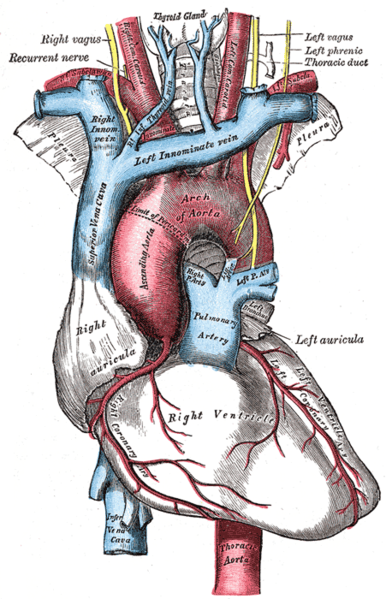 |
Rising to the challenge.
[Monte Cristallo via wikimedia] |
SP events have very different methods for student feedback. In places where I can give written or verbal feedback, I have developed a feedback hierarchy to prioritize the limited time I have. Developing a hierarchy allows me to succinctly provide feedback that is both individualized for that particular student and yet consistently reflects my most important values.
This list is ordered in a way which increasingly incorporates more awareness of patient needs at each level. Beginning students are most likely to hear the feedback at the first levels, while advanced students can discuss the higher-level items. If I find a student is defensive in feedback, I often find those students respond better to items lower in the hierarchy.
This is a living list. Last updated January 14, 2015.
Level 1: Domain knowledge
Some schools want you to talk to students about items on the checklist, but some don't. I prefer to spend limited feedback time on communication skills further on in the hierarchy. But if student doctors make mistakes in the history or physical exam to a degree which would be noticeable to a patient, it dramatically affects patient trust and confidence. For instance, if a student doctor hurts me during a physical exam, this is the most important feedback to give. If I feel nervous about how a student doctor handles vulnerable areas like my ears, eyes, or nose, it doesn't matter how empathetic they are. If a student doctor is very disorganized or hesitant when gathering history, as a patient I will feel dubious about their competence. If a student doctor touches me in what a patient could interpret as inappropriate, that's the most important feedback to give (e.g.: a student's knees between my legs, a coat cuff brushing against my breast, etc.).
Level 2: Rapport
Many checklists have a "rapport" item, but nobody ever really talks about what that means. For most SPs, it seems to be a catchall category for "I liked the student doctor" or "The student doctor seemed friendly." But I need more specific guidelines for myself so I can give specific feedback to students. So for me, rapport is about establishing a personal connection with the patient. So when I give feedback about rapport, I comment on posture, tone, eye contact, active listening skills, the use of open-ended questions, using my name, matching my energy,
jargon, and
communicating sincerity. These things help me feel as if the student doctor is paying attention to me and my nonverbal cues. In addition, if a student attempts to learn/respond to anything about me that isn't medically necessary for them to know (or if they tell me something about themselves), I count that as rapport.
Level 3: Empathy
I always say "
empathy first" in encounters, but if students have serious deficiencies in the first two levels, I usually address them in feedback first. To be honest, so few people use empathy regularly that many patients/SPs don't even know it's missing. So empathy is the first of the nuanced skills -- those skills which begin to sort the excellent students from the less adept students. For me, responding to a patient's emotional state is the key to empathy. So when I am looking for empathy, I am looking for student doctors to:
- acknowledge the patient's pain: during the chief complaint, when the patient describes the quality of the pain, when the patient rates the pain, or during a physical exam.
- acknowledge sensitivity for awkward or sensitive questions.
- acknowledge loss or grief: for instance, if family members have died while taking the family health history; if the patient or someone close to the patient has lost a job, etc.
- acknowledge fear or confusion: for instance, during a diagnosis or when the student uses overly technical language.
Level 4: Respect
Respect and rapport are often conflated, but I think you can have rapport without respect and vice versa. Respect indicates an awareness of the patient as an individual worthy of consideration and dignity. For instance, respect includes things like validation, normalization, accommodation, reflective language and transparency. The
power differential really comes into play here. Respectful student doctors are non-judgmental, honest, don't interrupt, admit uncertainty, apologize when necessary, take responsibility, keep commitments, and don't make assumptions based on class, gender, sexuality or race.
Level 5: Autonomy
This is one of the things I value most highly. Student doctors who promote patient autonomy prove themselves as trustworthy and make me feel safe. Unfortunately, this is the hardest category for most students because almost everything in medical school (and society at large) rewards the exact opposite of autonomy. I am especially interested in how to facilitate
true consent, one where patients feel they have the understanding to make the right decision for themselves and the ability to safely refuse without compromising care. This can be as simple as asking permission to touch a patient and as complex as signing surgical consent forms. So when I give feedback about autonomy, I often comment on the basic tools of summarization and expectations management. In addition, I especially esteem student doctors who go so far as to ask my opinion or
invite collaboration. But influencing the way student doctors ask questions is one of my most effective ways to improve autonomy: I want them to ask questions in ways that don't inherently limit the acceptable answers, wait for
consent, and keep inviting questions until I am satisfied. Checklists don't usually have a category that would apply to this, so I often lump it into Respect. But I think it is so much bigger than that. You can respect someone but not support their autonomy.







.jpg)

._Oil_painting_by_a_painte_Wellcome_L0019669.jpg/608px-Aristotle_refusing_the_hemlock_(%3F)._Oil_painting_by_a_painte_Wellcome_L0019669.jpg)


.jpg/722px-Crabeth_Card_players_(detail).jpg)





